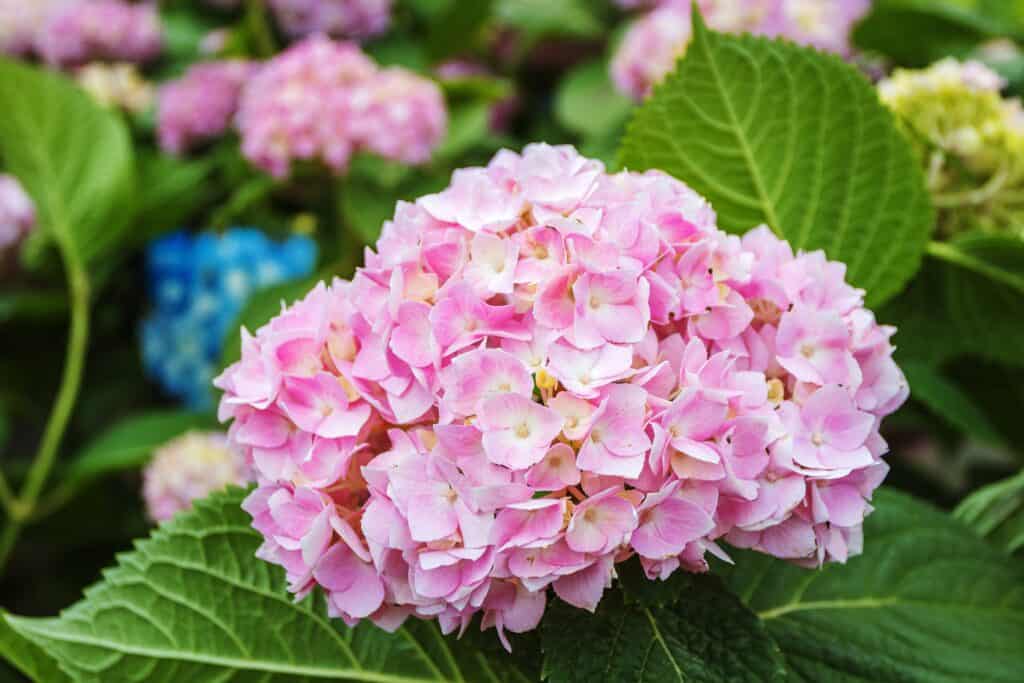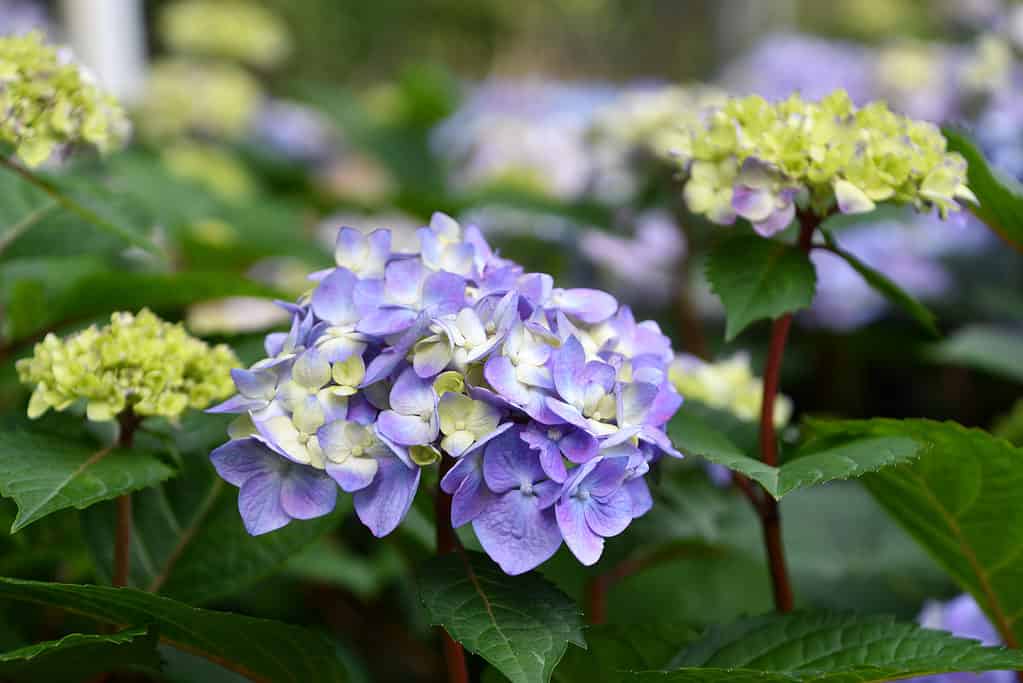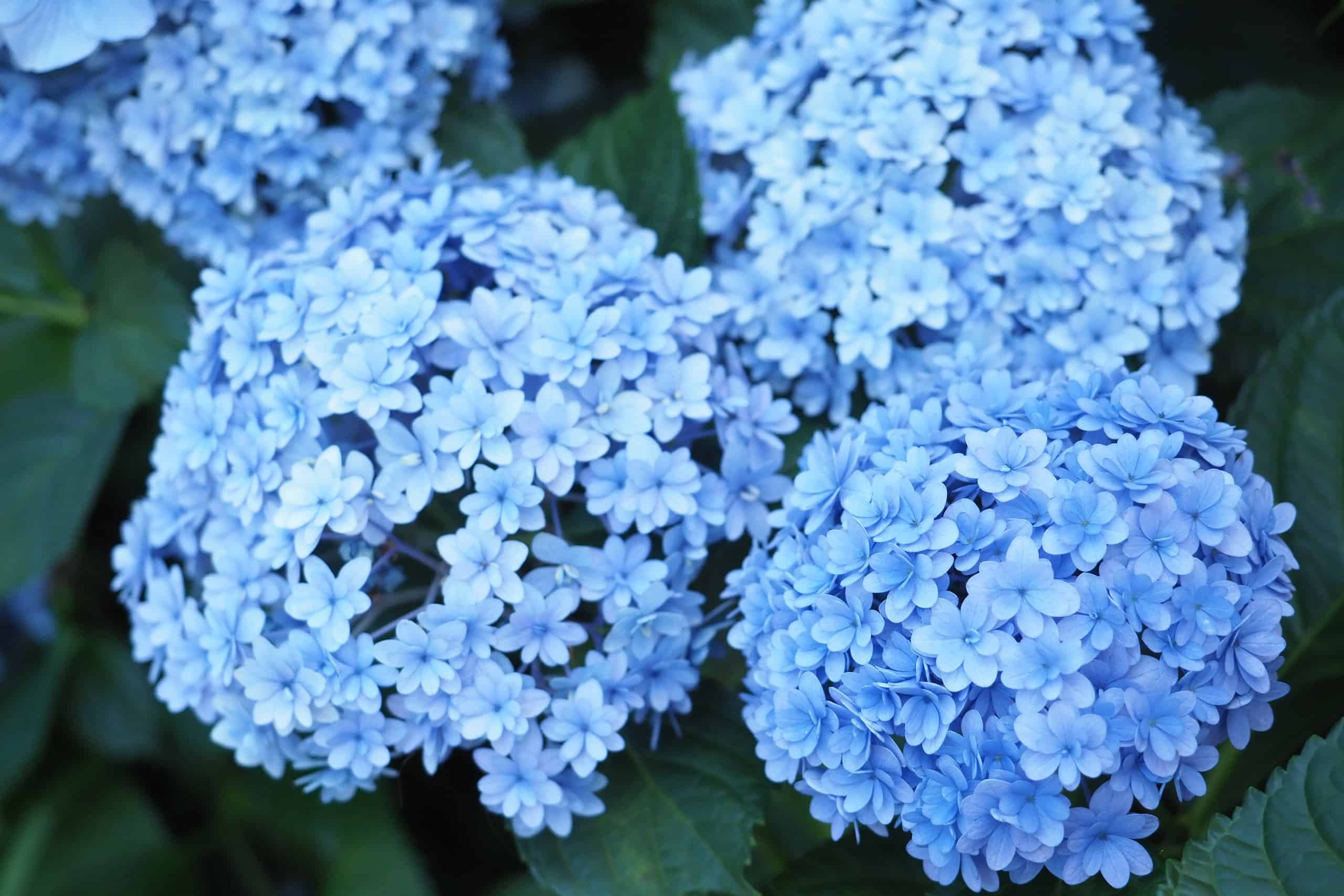With so many varieties of hydrangeas available, it can be difficult to tell the cultivars apart — especially when they all share a species! Endless Summer® hydrangeas are a long-time favorite among gardeners, chosen for their continuous blooming patterns. BloomStruck® is a relatively new cultivar that was designed to address some of the pain points gardeners experience when cultivating hydrangeas. Here’s what you need to know about the similarities and differences between Endless Summer and BloomStruck hydrangeas to determine which is better for your garden.
Quick Comparison
| Endless Summer® | BloomStruck® | |
|---|---|---|
| Classification | Hydrangea macrophylla ‘Bailmer’ | Hydrangea macrophylla ‘P11HM-11’ |
| Alternative Names | Bigleaf hydrangea, mophead hydrangea | Bigleaf hydrangea, mophead hydrangea, BloomStruck hydrangea |
| Origin | Asia, North America | Asia, North America |
| Description | Flower clusters grow on a woody shrub in vibrant shades of purple, blue, and pink. The petals have a rounded heart shape and yellow center. Shrubs typically grow 3-4 feet tall and 3-4 feet wide, but may span further as they age. | Flower clusters grow on a woody shrub in vibrant shades of purple, blue, and pink. The petals have a rounded heart shape and yellow center surrounded by white edging. Shrubs typically grow 3-4 feet tall and 3-4 feet wide, but may span further as they age. |
| Uses | Attract pollinators, ideal for dried floral arrangements | Heat and disease-resistant alternatives to traditional hydrangeas |
| Growth Tips | Plant in partial sun, partial shade in well-draining soil. Thrives in USDA Zones 4-9. Blooms grow on new and old wood. Avoid pruning in the winter, waiting until spring after new buds show. In areas where the temperature drops to -20 °F, stake and cover with burlap, using mulch for balance. | Plant in partial sun, partial shade in well-draining soil. Thrives in USDA Zones 4-9. Blooms grow on new and old wood. Avoid pruning in the winter, waiting until spring after new buds show. In areas where the temperature drops to -20 °F, stake and cover with burlap, using mulch for balance. |
| Interesting Features | Soil with higher pH levels will yield lighter flowers (pink, white), lower pH levels result in darker flowers (purple, blue). | Soil with higher pH levels will yield lighter flowers (pink, white), lower pH levels result in darker flowers (purple, blue). |
Endless Summer® Hydrangea vs. BloomStruck®: Key Differences
The Endless Summer® and BloomStruck® hydrangeas are the same species but different cultivars. BloomStruck® was designed to be identical to the Endless Summer® with a few modifications in hardiness.
Endless Summer® is particularly susceptible to mildew growth and disease. BloomStruck® is more disease and drought-resistant while boasting thicker stems, which makes it more durable against heavy snows and strong winds.

BloomStruck® was designed to be identical to the Endless Summer® with a few modifications in hardiness.
©ButtermilkgirlVirginia/Shutterstock.com
Endless Summer® Hydrangea vs. BloomStruck®: Classification
Both the Endless Summer® hydrangea and BloomStruck® hydrangea are cultivars of a shared species: Hydrangea macrophylla.
The Hydrangea macrophylla species includes all cultivars in the lacecap and mophead hydrangea varieties. Endless Summer® and BloomStruck® are both mopheads, defined by their large, globe-like flower clusters.
Cultivars are subsets of species that are created through selective breeding. This can occur naturally through the evolutionary process or in a lab environment. These cultivars are a combination of each approach.

Endless Summer® and BloomStruck® are both mopheads, defined by their large, globe-like flower clusters.
©Lux pictura/Shutterstock.com
Endless Summer® Hydrangea vs. BloomStruck®: Origin
Hydrangeas originate in Japan with early traces found throughout Asia. Recent discoveries have also identified their presence in North America 45-60 million years ago through fossils discovered in the Pacific Northwest region.
Dr. Michael Dirr, a University of Georgia professor of Horticulture, discovered the Endless Summer® hydrangea cultivar. He noticed the blooms growing on the previous season’s stems (old wood) as well as new stems, which was previously unheard of in hydrangeas. In the years between the 1998 discovery and the 2004 public release, Dr. Dirr worked on the Endless Summer® in his personal facility to perfect these traits.
The BloomStruck® cultivar was discovered in 2009, in a field of Dr. Dirr’s other Endless Summer® cultivar, the Twist n Shout. The bloom immediately struck a chord with the team (hence the name), as it was a bright, pink mophead hydrangea in a field of lace caps. Dirr’s team discovered that the BloomStruck® was practically similar to the original Endless Summer but more resistant to disease and extreme weather.

The BloomStruck® hydrangea flower clusters grow on a woody shrub in vibrant shades of purple, blue, and pink.
©George Cade/Shutterstock.com
Endless Summer® Hydrangea vs. BloomStruck®: Description
Both the Endless Summer® and BloomStruck® hydrangea cultivars are showy with large mophead flower displays. They both boast heart-shaped petals in stunning shades of pink, purple, and blue — though the BloomStruck® cultivar often has a bit of white around the center.
Endless Summer® and BloomStruck® hydrangeas both grow to an average of 3-4 feet tall and 3-4 feet wide, though they’ll span wider in some environments.
The key difference in appearance is subtle. The Endless Summer® stem is slightly narrower and flimsier than the BloomStruck®. The BloomStruck® stem also has red tones in the stem, petioles, and leaf veins.

The key difference in appearance is subtle with the BloomStruck® stem having red tones in the stem, petioles, and leaf veins.
©ncvalkyrie/Shutterstock.com
Endless Summer® Hydrangea vs. BloomStruck®: Uses
Both the Endless Summer® and BloomStruck® hydrangeas are used as border plants and decorative shrubs. They’re a great addition to pollinator gardens and offer a subtle aroma.
BloomStruck® tends to be favored in regions with extreme weather. Choose this cultivar if you live somewhere with extreme drought periods or heavy snow and winter winds.

Both the Endless Summer® and BloomStruck® hydrangeas are used as border plants, decorative shrubs and to attract pollinators.
©iStock.com/9632290_400
Endless Summer® Hydrangea vs. BloomStruck®: Growth Tips
Hydrangea macrophylla plants prefer a growth patch with partial shade. Consider planting your hydrangea in full sun if you live in a northern zone. Try to plant them in a place with existing wind barriers.
Endless Summer® and BloomStruck® hydrangeas prefer moist, well-draining soil. Add mulch to help regulate moisture in warmer areas. If you notice your hydrangea drooping in the heat, don’t water it until after sunset.
While you can deadhead these hydrangea cultivars in the fall, don’t prune them until the spring. As these varieties grow on new and old wood, it’s best to let the buds pop so you can avoid cutting them.
Thank you for reading! Have some feedback for us? Contact the AZ Animals editorial team.








